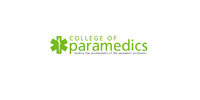The Diagnosis: Pregnancy
Pregnancy is established in several ways.
Based On History-Taking
- Sexual contact.
- Duration of amenorrhoea.
- Secondary pregnancy symptoms (tender, painful breasts, morning sickness or vomiting).
Physical Examination
- Speculum Examination: One of the signs of pregnancy is Chadwick’s sign. This is the bluish discolouration of the inside of the labia minora, the clitoral area, the vulvar vestibule, the vaginal orifice, the vagina and the uterine cervix, that arises due to hyperaemia/venous congestion.
- Bimanual Examination: During the bimanual examination, depending on the duration of the pregnancy, an enlarged uterus may be associated with signs of Piskacek and Hegar. Piskacek’s sign is the asymmetric enlargement of the uterus at the start of pregnancy, which is caused by the implantation of the ovum in one of the two sides (fibroids). Hegar’s sign is the softening of the transition from the uterine cervix to the body of the cervix due to hyperaemia of the tissue. As a result of this, during internal examination, the uterus gives the impression of being separated from the cervix.
- External Examination: In the case of advanced pregnancies, from 20 to 24 weeks amenorrhoea onwards, the diagnosis will mostly be made by palpating the fundus of the uterus, seeing the foetus move or feeling foetal parts and/or hearing the foetal heartbeat.
Laboratory Tests
Measuring hCG levels. Depending on the sensitivity of the test, the hCG determination may be performed from the 14th day after conception onwards.
Additional Examinations
Ultrasound scan/foetal doppler. Seeing foetal parts, or hearing the foetal heartbeat is proof of pregnancy.
Conditions, Equipment And Materials
Conditions
To minimise the inconvenience of the general physical examination and the obstetric-gynaecological examination in particular, the following aspects are important:
- Surroundings should be comfortable (warm room, good examination table) and attention must be given to the woman’s privacy (presence of screen or curtain, no other people or as few as possible).
- The care provider should inform the woman about what is going to happen and why.
- The woman should be clearly told where she can undress and which articles of clothing should be removed.
- Steel specula which feel colder than the body temperature can be pre-warmed using warm water.
Necessary Equipment And Materials
The following are needed to perform the investigation:
- An examination room with hot and cold running water and a changing area (e.g. behind a screen).
- A comfortable examination table that can also be used as a gynaecological chair.
- Instruments.
For more detailed information see the “The Gynaecological Examination”.
The General Physical Examination
The general physical examination consists of:
- General inspection.
- Measurements.
- Chest and breast examination.
General Inspection
In anticipation of the pathological effects of altered metabolism and/or posture, attention should be paid to:
- Face (oedema, chloasma).
- Hands (oedema).
- Back (scoliosis, lordosis, kyphosis).
- Feet and legs (venous insufficiency, varicose veins, oedema).
Measurements
- Height: Differences in height in normally-proportioned women often reflect differences in pelvic size.
- Weight: During the further course of pregnancy, weight gain is important for women who are not extremely overweight or underweight.
- Blood Pressure: In pregnant women, the diastolic pressure should be measured at the point where the sounds disappear (Korotkoff V).
Blood Pressure Measurement
- Sit opposite to the woman.
- Explain what is going to take place.
- Expose the woman’s arm.
- Ask the woman to relax her arm and place it on the table.
- Ensure that any clothing on the upper arm is loose.
- Check that there is no air in the cuff.
- Check that the sphygmomanometer is set to zero.
- Check that the tubes are not obstructed or kinked.
- Place the cuff around the upper arm.
- At a distance of 3 to 5 cm from the elbow fold.
- Cuff over the brachial artery.
- Closely fitted so that there is only space for one finger in between.
- Place the diaphragm side of the stethoscope in the elbow fold at the height of the brachial artery in the cubital folds.
- Inflate the cuff quickly.
- Palpate the radial artery or auscultate during inflation; inflate up to 30 mmHg above the pressure at which the radial pulse disappears or the sounds can no longer be heard.
- Carefully open the valve and allow the mercury column to descend continuously at 2 mmHg per second.
- Read the systolic blood pressure. This is the value that is visible upon the first sound being heard. Subsequently, under physiological conditions during the further decrease in cuff pressure various sounds and a murmur are observed.
- Read off the diastolic blood pressure (Korotkoff V). Just before the disappearance of the last sound the tones become muted; this is Korotkoff phase IV.
- Note the findings, recording the systolic pressure first and then the diastolic pressure, separating the two with a forward slash. Note Korotkoff IV/V. Round off to the nearest Figure divisible by 5, e.g. 125/70.
- Once the diastolic blood pressure has been recorded, allow the balloon to deflate rapidly.
Blood pressure can also be measured while the woman is lying down. A difference between blood pressure in the supine and semi-prone positions is ascribed prognostic significance with respect to the development of hypertension in pregnancy. However, it is important that the same position is adopted for the blood pressure measurement throughout the entire pregnancy. Changes (increase or ‘mid-pregnancy dip’) are more important than the absolute value.
Examination Of Thorax And Breasts
For women who are under the care of a midwife, the following examinations can be carried out by the woman’s GP. In the absence of any relevant history, the decision may be made not to carry out these examinations.
Thorax Examination
Pregnancy places a burden on the vital organs such as the heart and lungs. Once pregnancy has been determined, a physical diagnostic examination of the heart, lungs and breasts should be performed even where the history is normal.
Heart
A healthy heart has sufficient functional reserve to meet the increased circulatory requirements. In some pregnant women, heart murmurs and extra sounds may occur that are not present outside of the pregnancy and are not due to a heart defect. One such example is a systolic murmur in the aorta and pulmonary artery that is usually best heard in the left, second intercostal space next to the sternum. The symptoms of a heart defect are the same in a pregnant woman as in a non-pregnant woman.
Lungs
The respiratory rate (per minute) increases by about 40% due to the high position of the diaphragm and altered shape of the thorax. However, the vital capacity and the breathing frequency remain the same throughout the pregnancy.
Breasts
As the pregnancy advances, the interpretation of breast examinations will be hindered by the enlargement of the milk glands and the increased vascularisation.
During the breast examination look out for pregnancy signs such as:
- Swelling.
- Venous pattern.
- Pigmentation.
- ‘New’ striae.
- Ectopic breast tissue.
The Obstetric Examination
The obstetric examination consists of:
- Preparation.
- Inspection of the abdomen and groins.
- External obstetric examination.
- Inspection of the external genitals.
- Speculum examination and cervical smear.
- Bimanual examination.
- Internal pelvic examination.
Preparation
- Ensure privacy.
- Explain what will happen in straightforward language.
- Enquire whether the bladder is empty.
- Ask the woman to undress the lower half of her body.
While waiting for the woman to get undressed, place the following materials within easy reach next to the examination table:
- Speculum. A frequently used speculum is the Seyffert speculum. This speculum has a pistol-grip shaped handle and can easily be rotated during inspection of the vagina wall. However, it is difficult to use if the woman is lying on an examination table without leg supports, as there is no space for the handle in this position. In that instance, it is better to use a different type of speculum or to place an inverted kidney bowl under the buttocks. The speculum can be brought up to body temperature using tepid water. The water also has a slight lubricating effect.
- Kidney bowl.
- Chlorhexidine or glycerine.
- 5 ml syringe.
- Ayre spatula.
- Fixating spray.
- Gloves.
- Pencil.
- Slide with frosted side.
On the slide, record:
- Woman’s surname and maiden name.
- Woman’s date of birth.
- Monaural stethoscope or foetal doppler.
- Measuring tape.
Ask the woman to lie down on the examination table or sit on the gynaecological chair, place her legs in the stirrups and to lie with her buttocks at the edge of the examination table. Provide assistance if necessary. Ask her to indicate if the examination causes pain.
Inspect The Abdomen And Groins
During the inspection note:
- Striae, hyperpigmentation, curvature, operation scars, hernias.
External Obstetric Examination
The external obstetric examination, while important for subsequent examinations during the pregnancy, is frequently only of limited value during the first examination because the pregnancy is not advanced enough to be able to palpate the uterus externally. In the first trimester, the uterus fills the lesser pelvis, but in the majority of cases, scarcely emerges above the symphysis pubis.
Upon palpation, note:
- Consistency of the uterus.
- Position of the fundus of the uterus.
Auscultation
Listen to the foetal heartbeat. The normal foetal heart rate is 110-150 beats per minute.
These sounds are audible:
- From about the 10th week of pregnancy onwards when a foetal doppler is used.
- From about the 18th to the 20th week of pregnancy onwards using a monaural stethoscope. The monaural stethoscope is the forerunner of the binaural stethoscope and nowadays, is only used in obstetrics. A positive characteristic of the monaural stethoscope is the sturdiness of the material, as a result of which during auscultation the abdominal skin of the mother is pressed as firmly as possible against the foetus. Consequently, there is no amniotic fluid (which has a strong muffling effect on sound) between the foetal heart and the examiner’s ear.




























